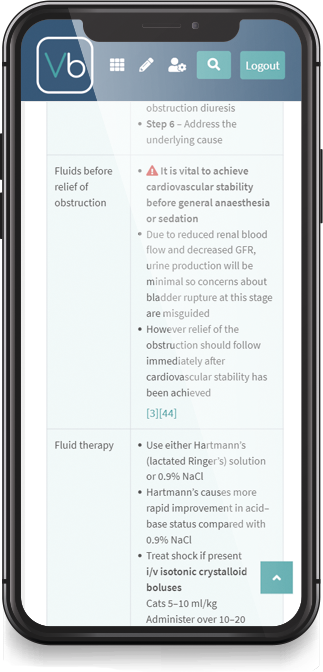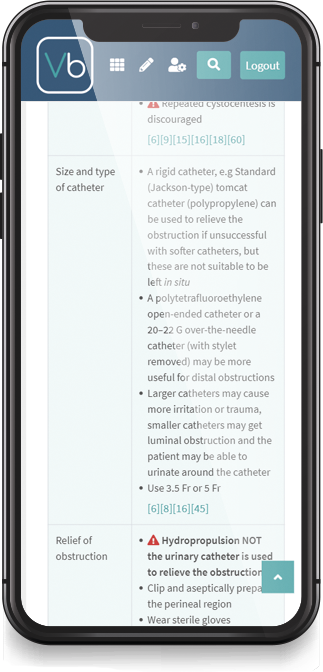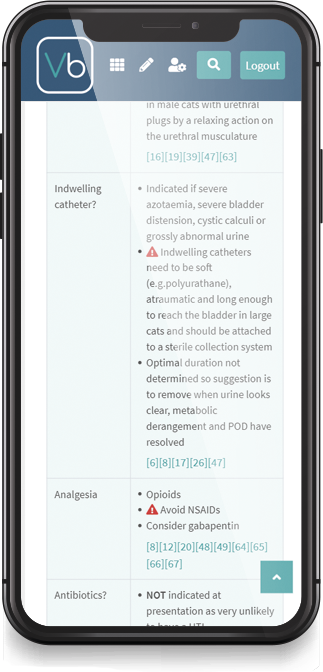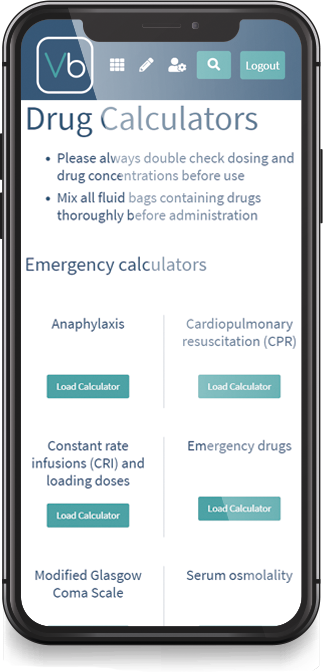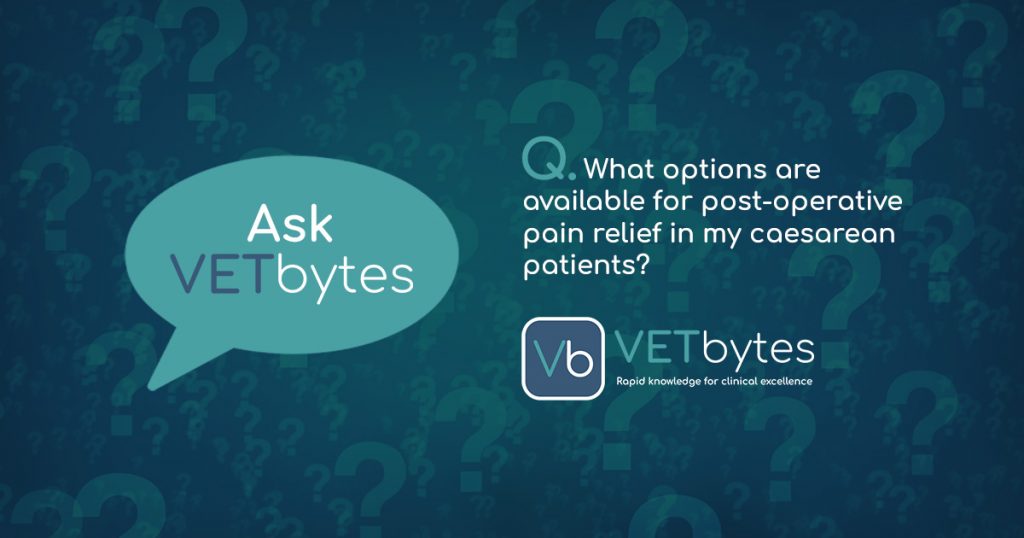
In our new feature ‘Ask VETbytes’, our team of vets will be answering your questions. This week we were asked “What are the options for post-operative pain relief in dogs and cats undergoing caesarean section?”
This is an area where veterinary evidence is lacking and where our patients don’t always receive adequate analgesia, so we have drawn on both human studies and specialist veterinary consensus to create a practical guide for you and your patients:
- Despite the paucity of published evidence regarding the safety of analgesic drugs in the pregnant or lactating dog and cat it is important to recognise our responsibility to the welfare of our patients regarding the provision of adequate analgesia10
- It is estimated that the neonate receives approximately 1–2% of the maternal dose of a drug14
- A longer acting opioid injection may be administered after all the foetuses have been removed e.g. methadone 0.1–0.2 mg/kg10,41
- In women, NSAIDs are considered safe and effective analgesia after caesarean section because of their low excretion in breast milk38,40
The same is considered likely to apply to dogs and cats due to the known physiochemical properties of the drugs13,14
A single dose administered in the immediate postoperative period is generally advocated10,14
Consider ongoing administration, as required, for 1-2 days after discharge13 - Paracetamol is generally considered safe in dogs14
- NSAIDs should only be administered if the bitch/queen is normovolaemic and normotensive13
- Paracetamol should NOT be used in cats14
- None of these drugs are licensed for lactating bitches or queens, ensure that prior owner consent is obtained for their use
Sign up for a free trial of the VETbytes emergency and critical care module to receive full clinical guides or subscribe for an annual licence for only £99/year!
References:
10. Self, I. (2019)
Anaesthesia for canine caesarean section
Companion Animal; 24 (2) 84-90
Abstract
13. Robertson, S. (2016)
Anaesthetic management for caesarean sections in dogs and cats
In Practice;38(7) 327-339
Abstract
14. Mathews, K., Kronen, P.W., Lascelles,D., et al. (2014)
WSAVA Guidelines for Recognition, Assessment and Treatment of Pain
Journal of Small Animal Practice; 55 (6) E10-68
Full text available
38. Bloor, M. and Paech, M. (2013)
Nonsteroidal anti-inflammatory drugs during pregnancy and the initiation of lactation
Anesthesia and Analgesia;116 (5) 1063-1075
Abstract
40. Spigset, O., Hägg, S. (2000)
Analgesics and Breast-Feeding: Safety considerations
Paediatric Drugs 2(3), 223–238
Abstract
41. Romagnoli, N., Barbarossa, A., Cunto, M., et al (2019)
Evaluation of methadone concentrations in bitches and in umbilical cords after epidural or systemic administration for caesarean section: A randomized trial
Veterinary Anaesthesia and Analgesia 46(3), 375-383
Abstract




